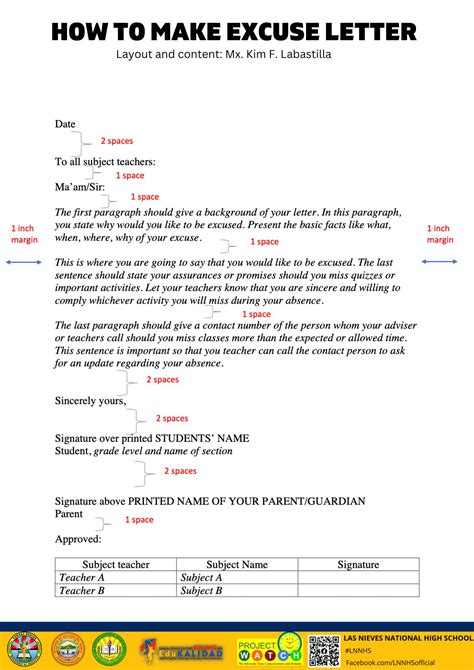Navigating the Medical Maze: The Significance of a Doctor’s Excuse Letter

In the labyrinthine world of healthcare, a doctor’s excuse letter serves as a beacon of verification, providing a crucial bridge between medical necessity and the demands of daily life. Whether it’s for an extended absence from work or a respite from academic obligations, a well-written excuse letter empowers patients to navigate the challenges of short-term medical setbacks with ease.
Crafting an Effective Dr. Excuse Letter
1. Establish a Clear Timeline:
The essence of a doctor’s excuse letter lies in its concise and accurate depiction of the patient’s medical condition and its impact on their ability to fulfill their responsibilities. Clearly state the start and end dates of the medical leave, ensuring that the period aligns with the prescribed treatment plan or recovery time.
2. Provide a Medical Diagnosis:
While maintaining patient confidentiality, the doctor’s excuse letter should provide a brief yet informative account of the medical condition necessitating the leave. The diagnosis should be sufficiently specific to justify the absence without divulging overly sensitive medical information.
3. Explain Treatment and Restrictions:
Detail the prescribed treatment plan, including medications, procedures, and any limitations or restrictions. This section helps employers or educational institutions understand the nature of the condition and the anticipated recovery process.
4. Outline the Expected Duration of Absence:
Accurately estimate the expected duration of the medical leave based on the doctor’s assessment and the severity of the condition. If there is uncertainty regarding the exact return date, provide a range of possible dates.
5. Offer Follow-Up Information:
In certain cases, it may be beneficial to include follow-up instructions or contact information for the healthcare provider. This allows for any necessary adjustments or clarifications to be made as the patient’s condition evolves.
Common Mistakes to Avoid
Falling prey to common pitfalls can undermine the efficacy of a doctor’s excuse letter. Avoid these errors to ensure a seamlessly accepted document:
- Lack of Specificity: Vague and ambiguous language leaves room for interpretation and may hinder the understanding of the medical condition.
- Delay in Issuance: Promptly obtaining a doctor’s excuse letter is crucial to minimize any potential consequences related to an extended absence.
- Absence of Doctor’s Signature: The absence of a physician’s signature renders the document invalid and diminishes its credibility.
- Inaccurate Information: Errors in the timeline, diagnosis, or treatment plan compromise the integrity of the letter and may raise questions about its authenticity.
- Unauthorized Alterations: Any unauthorized modifications or tampering with the doctor’s excuse letter can invalidate the document and put the patient at risk of disciplinary action.
Pros and Cons of Using a Dr. Excuse Letter
Pros:
- Provides official documentation of a medical condition and its impact on daily activities.
- Facilitates the accommodation of medical leave requests by employers or educational institutions.
- Protects patients from potential disciplinary actions or penalties for excused absences.
- Ensures privacy and confidentiality of medical information, as opposed to self-certifications.
Cons:
- May require a doctor’s visit, which can incur costs or take time away from work or school.
- Can lead to excessive reliance on healthcare providers for minor illnesses or foreseeable absences.
- Some employers or institutions may have restrictions on the acceptance of doctor’s excuse letters.
Innovative Applications of Dr. Excuse Letters
Beyond their traditional role, doctor’s excuse letters offer innovative possibilities for problem-solving in healthcare and beyond:
- Telemedicine Integration: The integration of telemedicine platforms allows for remote issuance of doctor’s excuse letters, improving convenience and access to medical documentation.
- Automated Generation: Advanced technologies can automate the generation of doctor’s excuse letters based on predefined criteria, reducing the workload for healthcare providers.
- Patient-Driven Empowerment: Empowering patients with self-management tools for minor illnesses can facilitate proactive self-care and reduce the need for physician appointments solely for excuse letters.
Conclusion
A well-crafted doctor’s excuse letter serves as a powerful tool in navigating medical absences and ensuring the well-being of patients. By adhering to best practices, avoiding common mistakes, and embracing innovative applications, both healthcare professionals and individuals can harness the benefits of this essential medical document.
Tables:
Table 1: Common Medical Conditions Requiring a Dr. Excuse Letter
| Condition | Duration | Restrictions |
|---|---|---|
| Acute Illness | 1-3 days | Rest, hydration, over-the-counter medications |
| Fractures | 4-8 weeks | Immobilization, pain medication, physical therapy |
| Chronic Conditions | Ongoing | Variable, depending on condition |
| Surgical Procedures | 2-4 weeks | Incision care, pain management, activity limitations |
Table 2: Questions to Ask Your Doctor When Requesting an Excuse Letter
| Question | Rationale |
|---|---|
| What is my medical diagnosis? | Provides clarity about the condition and its impact on daily life. |
| How long will I be unable to work or go to school? | Establishes a timeline for the absence. |
| What treatment or medications am I prescribed? | Outlines the steps being taken to manage the condition. |
| Are there any specific restrictions or limitations I should follow? | Ensures compliance with prescribed treatment and prevents further injury or illness. |
Table 3: Pros and Cons of Using a Dr. Excuse Letter
| Pros | Cons |
|---|---|
| Official documentation of medical condition | Potential costs of doctor’s visit |
| Facilitation of accommodation requests | May be required for minor illnesses |
| Protection from disciplinary actions | Can lead to overreliance on healthcare providers |
| Privacy and confidentiality | Some employers or institutions may have restrictions |
Table 4: Innovative Applications of Dr. Excuse Letters
| Application | Benefits | Challenges |
|---|---|---|
| Telemedicine integration | Improved convenience and access | Ensuring secure and reliable communication |
| Automated generation | Reduced workload for healthcare providers | Potential for errors or inaccuracies |
| Patient-driven empowerment | Proactive self-care | Limited application for serious or complex conditions |
